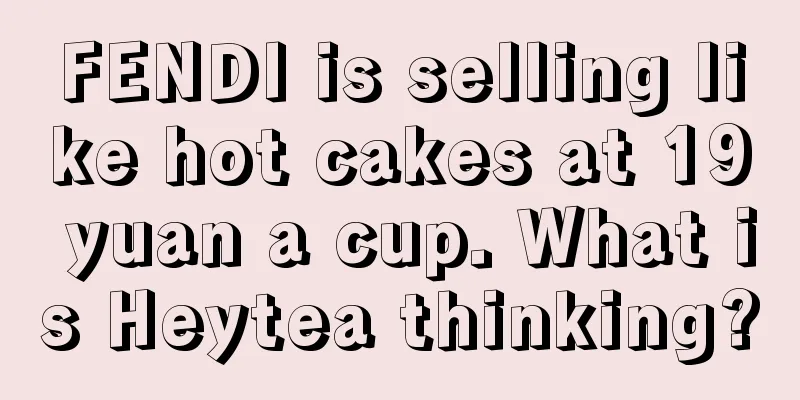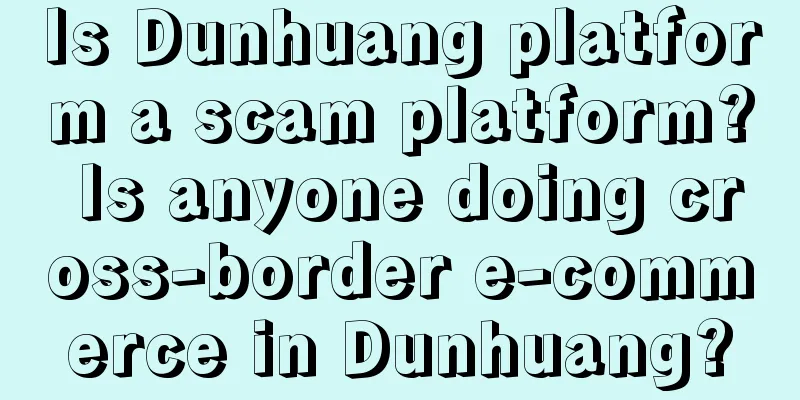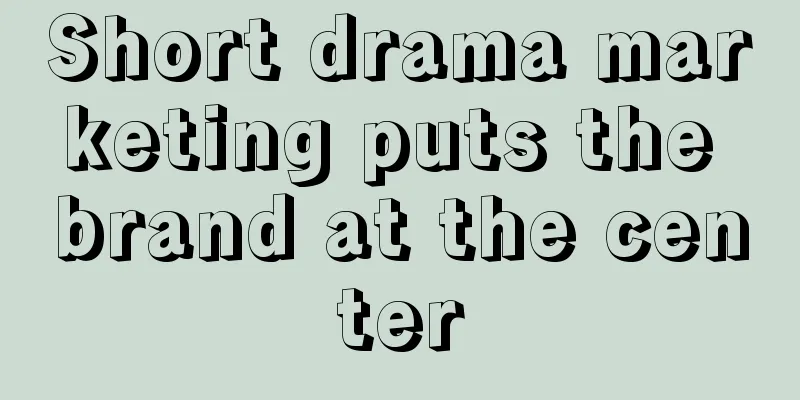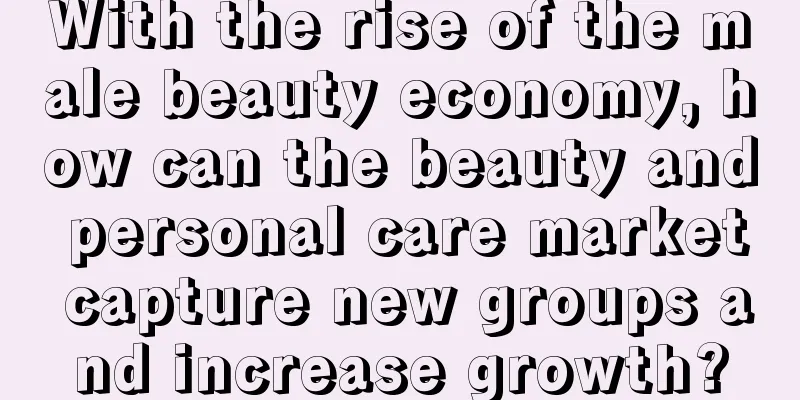What is the difference between advertising and content?
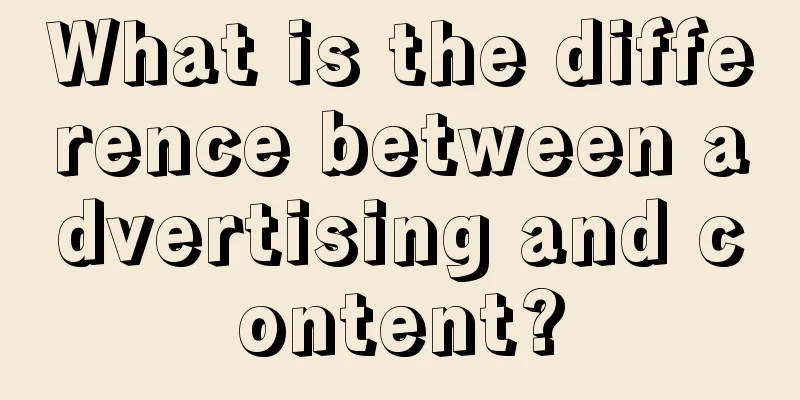
I recently talked with a friend who runs a brand overseas and found that the marketing issue all over the world is now the same, which is the inability to solve the mid-funnel problem. To put it in plain Chinese, it means that we don’t know how to seed content. I feel relieved when I know that foreigners are also troubled by this issue. Just like what I talked about in a podcast with Diao Ye a few days ago, our consensus is that the world is now facing a brand new marketing environment and issues, but China is the most advanced in this issue. Since my first article in 2015, "What I Learned from Doing New Media at MK in New York", I have been emphasizing the importance of "content marketing", but recently I discovered that even though it is already 2024, many people still have only a vague understanding of the essence of "content". Nowadays, everyone is talking about the importance of content, but no one can really explain what the essence of content marketing is and how to define good content. To put it in a dirty joke: content marketing is like teenager sex – everyone is talking about it. But nobody knows what it really is. (Dirty jokes are not suitable for translation) Advertising has gradually lost its former magic. Brands still have to spend millions on advertising, but many of them are "ineffective advertising" - the Baidu index may have improved, but there is no change or movement on the e-commerce side. I don’t think big advertising is ineffective. On the contrary, advertising will always exist. In the process of branding from single product matrix to category and then to brand establishment, without the support of brand advertising, it is difficult for consumers to think that you are a "brand" rather than just an online celebrity single product. But the problem is that big advertisements in the past were all based on a unified marketing consensus - the big penetration and big distribution model (HBG) - aka, advertising creates brand effects, brands leverage the dealer system, and terminal channels increase sales, thus forming a cycle. However, as e-commerce or DTC (direct to consumer) business models increasingly become the core driving force, we are paying more and more attention to the multi-dimensional increase of user value, horizontal expansion of product categories, and vertical extension of the life cycle. Last week, I chatted with Terry, the brand manager of Royal Friso, and one of his views touched me deeply: Advertisements are like the loud speakers at the entrance of the village, everyone listens when they shout. But content is like stereo surround sound, it needs to penetrate into your capillaries in the form of multiple audio tracks to open up your stereoscopic senses. So what is the difference between advertising and content? What problems does good content solve that advertising could not solve in the past? Recently I started to systematically establish Daofa Global Consulting, and I also had a lot of feelings during the project. I have more opinions and insights on content marketing than I can express in 100,000 words, so I want to start opening the [Daofa Global Content Strategy] series of chapters and talk to you. Why be afraid of the infinite truth? Just be happy with every inch of progress you make. I also welcome more traders to communicate with me in the comment section. I hope that marketers all over the world can realize their value on our Daofa platform. 01 Audience: Advertising is a high-altitude radiation to the general public, while content is a precise resonance to the segmented populationWhen we talk about the difference between advertising and content, let’s start with the first point: the audience. In the past (when I was at Unilever), we focused on TA and insights and would say that we were "consumer-centric." But in fact, the TA back then and the group of people mentioned in the current omni-channel content marketing are completely different. For example, the Unilever Dove advertisement "You are more beautiful than you think" that we were proud of back then, the value behind it is "inner beauty". Inner beauty is very beautiful and is a very important brand high ground, but the people behind it are actually "the vast majority of women who value inner beauty", or to be honest, "women". This kind of advertisement is like an aerial cannon, which seems to hit everyone, but in fact it hits no one. In the scope of global content marketing, we focus on three groups: core group, seed group, and general group. The core group is the center of the potential ripples and is the key that most needs core influence and penetration. It is the key to the brand pyramid. The grass-planting crowd is the main sales force. They are the A3 group of people who can stimulate conversion just by reaching out. The general population is the audience. They may be the TA of that year. They are the broad audience. They are not necessarily the purchasing users of the brand, but they are also influenced by the brand. Do a good job of content marketing and find these key groups. To find them, we don’t use demographics, but sociology. For example, advertisements are not made for white-collar women aged 25-35, but for the “female protagonists”. Good marketing is "about me". Only by truly understanding the specificity and complexity of people and achieving true empathy can people be willing to watch it actively, and only then will everything follow up. 02 Algorithm: When people choose content, the content also divides peopleA lot has been said above, but it actually comes down to one key point: people are divided into groups. I have always said that in the past, birds of a feather flock together, but now people are divided into groups. In the past, people were centralized, their values were relatively unified, and they also pursued unified elements (such as celebrities). Now people are divided into groups, based on values, and based on segmented needs. They will not necessarily like a brand just because a celebrity endorses a product, but they will certainly take a second look at it. Instead, we focus on the people around us - "people who are similar to us", thus the rise of KOLs and KOCs. When we talk about content today, we must also talk about platforms, which are what I have always referred to as the two Weibo, Hong Kong, Kuaishou, and Douyin. In essence, it is the algorithmic mechanism of the platform that makes people increasingly divided into groups and content increasingly effective. Rentuo CMO Charles once told me, You are what you browse. Key points:
For example, going back to what was said above, for example, how can we find the "female protagonist group"? It is no longer about finding the consumer purchase labels behind the e-commerce and what they have bought. You are not just what you buy but what you browse. It is to find those women who may have been reading the popular science posts on how to start a business and make money. They may be women who are paying attention to the personal growth of Daojie Doris :) In this matter, Douyin has done a very thorough job. Douyin can directly extract the content tags from behind the platform, and then reversely infer which groups of people, and then associate with relevant KOLs, and then automatically deliver it with one click. The key to creating good content is to understand the platform’s labels, traffic distribution system, and the platform’s demographic G-spot. But most advertisements are loudspeakers at the entrance of the village, based on the logic of large penetration and large distribution, and the goal is to bombard and radiate in a short period of time. Pushing the same thing to everyone is not only effective, but the problem is that no one will read it. 03 Demand: Advertisements are related to existing category demands, while content transcends categories to stimulate unknown human needsWhen it comes to behavioral migration, we need to talk about what the real marketing tasks of business owners are behind advertising and content. In the past, most brand advertisements were aimed at solving the problem of competing for users within the category. Let me give you some examples: The first type of advertising template: Positioning and shouting type: Use Head & Shoulders to get rid of dandruff! Head & Shoulders is a scalp expert… The second advertising template: New product: What should I do if my child’s clothes are dirty? Question: I have OMO laundry detergent, which has XX function. What benefit can it bring? The third advertising template: Brand image type: Dove, real beauty. If you observe carefully, you will find that most advertisements are actually just competing for market share in the category demand that consumers have already determined. Because in the logic of mass penetration and mass distribution, the North Star indicator is the market share within the category. Even for a brand like Dove that promotes its brand image, it is not talking to specific people, but to this group of women to buy it. But have you noticed that with the emergence of more and more subcategories, “No. 1 in the category” has become a meaningless indicator. It's like when you were a kid you said you were the best in a school of 2,000 people, and now there are only 30 people in your school and you still say you are the best. I think you are just kidding. I once joked that any brand can now find self-consolation in being the number one in a certain category, because as long as the category is small enough, it can always be number one. By the way, "Use Head & Shoulders to remove dandruff", let's break down this sentence: Category scenario + pain point + I am the best. "Dandruff removal" is the premise. It assumes that many people have the need for dandruff removal. The logic is that when you need to remove dandruff, you choose me. If we only meet the existing requirements, two problems will arise: First, when the market is not big enough, the ceiling of the business is there. Second, when the top brands in this market are already fixed, no matter how hard you try, you will never be able to compete with the top brands in the category. When you switch from advertising to content, this type of positioning and brief will become invalid, and KOLs won’t even know how to start writing. Because when you create content, you are no longer concerned with “find B if you want to do X”, but with the real psychological demands behind consumers, the underwater JTBD hidden under the surface demands. Translated into this, it means “consumer task” – it solves ( what) needs of (which part of) consumers under (what) task ? The real consumer mission must not be superficial. What Head & Shoulders wants to solve is the dandruff removal problem for people who are prone to dandruff. If Head & Shoulders were doing content marketing, it would discuss underwater needs. Who is in urgent need of dandruff removal? What is the real task it wants to solve? The real purpose behind dandruff removal may be that every time there is dandruff on my shoulders, I will be scolded by my girlfriend or despised at work, which is very shameful. What I want to solve is the fear of shame. Therefore, when creating content, it is no longer just about shouting, but about finding content in relevant scenes and plots such as the workplace and dating to stimulate a sense of shame and then address the fears within consumers. For example, Li Ran, a company that does personal care for men, once released a set of films that appealed to the psychology of men in love who feel that their girlfriends don’t think they are handsome enough when they go out, and promoted their new product that “solves the troubles before going out in one minute”. The tasks on the water are generally universal and the most superficial needs, such as drinking water when thirsty, eating when hungry, holding an umbrella when it rains, and washing dirty clothes. The tasks under the water are the weaknesses of human nature, fear, showing off, the sense of belonging that is afraid of loneliness, and the sense of order that hopes to become better. It’s hard to create good content if you can’t find underwater missions. 04 Future advertisements should be content-basedI think good content must at least achieve the above three points: 1. Specific people 2. Understanding of algorithms 3. Inspiring underwater tasks. Of course, the advertisements I mentioned are actually the traditional fast-moving consumer goods advertising. In fact, advertising has long gone beyond the traditional scope I mentioned. In the future, advertising and content seeding will not be separated. Advertising is content, and content is seeding. As long as the advertisement meets the three content prerequisites, 1. Talks to specific people 2. Uses algorithms to push ads to similar people 3. Stimulates human underwater tasks, it is good content. Here’s a knife-like content strategy formula: Content seeding strategy = brand product strategy (triggered demand) * crowd * content plot * KOL interpretation * platform algorithm mechanism I’ll leave this formula a suspense for now and explain it in detail next time. Finally, I want to say that advertising, as the name suggests, is to advertise; content, perhaps, is to show the inner appearance. Advertising is a linear and simplified form of communication to the outside world, and its content is a communication that cares about the user's heart and awakens resonance. For a brand, no matter what form it takes, whether it is advertising or content creation, the important thing is to think clearly about what your purpose is. Author: Siete WeChat public account: Daojie doris |
<<: When a “boss” becomes an “Internet celebrity”, how should he build his personal IP?
>>: Private domain customer acquisition is worth doing all the time, over and over again!
Recommend
What are the differences between Shopify and Shopee? Which one is better?
As two popular platforms, Shopify and Shopee each ...
A private domain operator tells you how to double user retention (Part 1)
In the current fierce market competition, companie...
How long does it take for Amazon to remind me? What are the effects?
On the Amazon platform, when you open a store, if ...
How much does the average Amazon seller make in a year? What are the costs?
I know a little bit about Amazon at home. Many mer...
What are the current situations of those TikTok celebrities who gained millions of followers in 2024?
In the ever-changing Internet era, stories of over...
What is the difference between shoplus and shopfiy?
If you want to build an independent website, you n...
Video accounts "open the floodgates" for local life, and do not want to cross the river by following Meituan and Douyin
Video accounts have explored local life and are fu...
Is Amazon's zero-based training real? Is it reliable?
Many friends want to do Amazon cross-border e-comm...
I taught small and medium-sized enterprises to use ChatGPT and I made $500,000 in 3 months
Under the influence of ChatGPT, the entire workpla...
The underlying logic of category marketing
How to understand the nature of categories and how...
“Tourism Special Forces” surged during the May Day holiday: 120,000 people “entered Zibo”, but Beijing suburban homestays became unpopular?
During the first May Day holiday after the epidemi...
Send Meituan a bullet
On February 11, JD.com announced the launch of a &...
Xiaoguan Tea: The era of making quick money is over.
Xiaoguan Tea has gone from "masterpiece"...
A short drama made a city popular. Is it a real trend or a false concept?
Cultural tourism and short plays have been hot tra...
Which Shopee site is doing well? Market analysis of each site
Many cross-border e-commerce platforms are divided...
